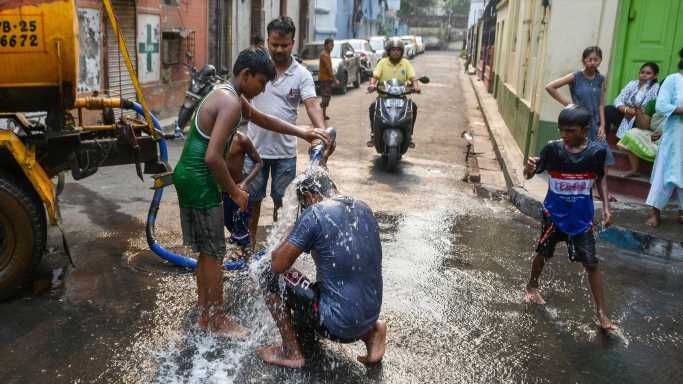Deadly heat wave envelops large swath of Asia, including India and China
Temperature departures from average in degrees Celsius on April 18, as shown by the European model. Image: Weatherbell.com
An intense and large-scale heat wave has enveloped large parts of Asia during the past two weeks, breaking longstanding records.
The big picture: From India to southern China to Thailand, stifling heat has set in unusually early this year.
- Studies show that this part of the world is especially vulnerable to the impacts of extreme heat.
- China and India alone are home to one third of the world's population.
- The link between more frequent and severe heat waves and human-caused climate change is firmly established, as formerly low probability, high-impact events occur more frequently.
By the numbers: The heat in India has brought temperatures exceeding 40°C (104°F) to numerous locations.
- On Monday, Prayagraj in India reached 44.6°C (112.3°F). Bangladesh also saw temperatures exceeding the 40°C mark, with weather historian Maximiliano Herrera warning, "It will just get worse."
- In China, temperatures have exceeded 35°C (95°F) in multiple provinces;on Monday, more than 100 weather stations broke their monthly high temperature records. Heat records fell in a dozen Chinese provinces.
- On April 15, Thailand set its highest temperature on record for any month, marking the first time the country has exceeded 45°C (113°F) when Tak, in the country's northwest, rose to 45.4°C (113.7°F), Herrera stated via Twitter.
- Many other locations set all-time records that day, too.
Threat level: Herrera called this event the "worst heat wave in Asian history" given its footprint, severity and timing, encompassing at least a dozen countries.
- These events have significant ripple effects. For example, heat waves can curtail daily activities and reduce economic output, from limiting outdoor construction work to closing schools that lack air conditioning.
- In India, the heat has been deadly. At least 13 people died of heat stroke on Sunday while attending a government-sponsored event honoring a revered social worker from Maharashtra. The ceremony was held outdoors, with tens of thousands of people packed close together.
- Typically, the hottest part of the year in much of India and Pakistan is later in April and during May, preceding the South Asian monsoon's arrival.
Between the lines: Though India and Pakistan saw a more severe April heat wave last year, the current system is affecting a much wider area.
- India was also hit by unusual heat during March of this year, too, making 2023 stand out even more.
- China also saw an unparalleled heat wave last year, but it occurred later in the summer.
The bottom line: The most recent report from the U.N. Intergovernmental Panel on Climate Change made clear that "every increment" of additional warming will worsen climate change effects, including heat waves.
Source: Read Full Article




